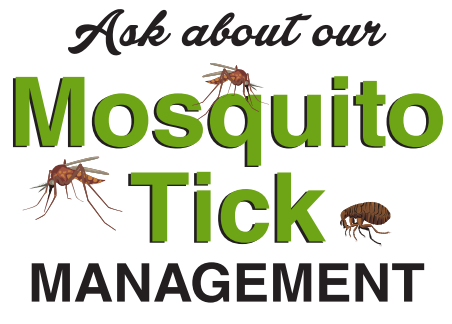Ticks spend most of their life at or near ground level where they wait on a suitable host for the purpose of securing a blood meal. They will also climb and are commonly found in tall grasses, weeds, bushes, shrubs, firewood, logs, fenceposts and siding. They detect the presence of a vertebrate mammal through vibration, odor, shadows and exhaled carbon dioxide and then climb or drop onto the host where they attach themselves.
Small, hard deer ticks are prevalent in areas where whitetail deer are located. Not to be confused with the large soft ticks that are found on dogs, this tick is responsible for transporting the disease organism that causes Lyme Disease. The prevalence of confirmed cases of this disease in recent years is thought to be connected to increasing deer numbers in urban areas. Concerns regarding the health risks and symptoms associated with this tick vector have caused many people to initiate tick management programs.
When managing the tick population around the exterior of the house and yard it is best to take an integrated approach that includes both habitat modification and chemical application. Tall grass, weeds and shrubs should be trimmed and debris such as leaves, wood and stored items or clutter should be removed. An EPA approved residual pesticide can be regularly applied to key areas on the house and in the yard to eliminate and repel the adult ticks.








